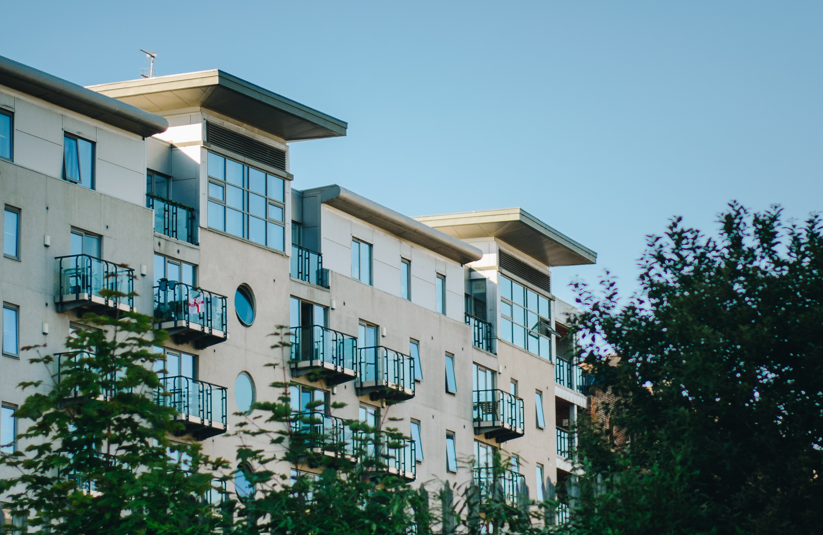With real estate values on the rise, older Canadians are asking, “What’s next?“
By Olev Edur
Ever since the COVID pandemic began, markets across the country have been on fire, with price hikes like nothing ever seen before in Canada. This trend has expanded beyond the usual suspects of Toronto, Vancouver and other big cities—in fact, the current boom has seen the biggest gains for rural and recreational areas. In some cases, property values in these locations more than doubled between 2019 and early 2021.
This turn of events seems positively counterintuitive, given the more immediate and visible effects of the pandemic. With everyone hunkered down in isolation and countless people losing their jobs or facing reduced employment and income prospects, how could housing prices have soared? And what does this mean for the future?
To answer these questions, one must look to the days before the pandemic, when the foundations of the current real estate situation were laid.
“Back in 2016, we began to see a megatrend of baby boomers’ children— millennials in the 25- to 35-year-old age group—who had the means to buy their own homes but had been comfortably living with their parents, and who were finally starting to buy their own homes,” says Phil Soper, the president and CEO of Royal LePage.
“We also began to see baby boomers— those now aged from the mid-50s to 75— moving away from their legacy homes,” says Soper. “In fact, a Royal LePage survey conducted at the time found that roughly 3.2 million baby boomers—a full third of that age cohort—intended to buy or sell real estate within the next five years.
“The housing industry peaked in 2016 and early 2017, but then we began to see the introduction of a variety of measures intended to help slow rising house prices, such as fair-housing laws and vacant-property and foreign-buyer taxes, which stifled the market,” says Soper. “Then in 2018, the federal government introduced a mortgage stress test, further curtailing housing demand. As a result, the market really slowed down; home sales stopped and prices stalled for the next three years.”
Pent-up demand explodes
The net result was that demand potential began to build—and then the pandemic arrived and, with it, lockdowns. While many people lost their jobs and/or saw their incomes decline, many others were able to continue working full-time, usually from their homes, and still others had their incomes subsidized or replaced with government grants. Overall, people started saving substantial amounts: retail options were restricted, the tourism and hospitality industries (restaurants, bars, entertainment venues) were mostly shuttered, so money that otherwise would have been spent was instead set aside or invested.
Extremely low interest rates that resulted from the global crisis also contributed to the overall housing shift. Rates had already been quite favourable for many years, but they were reduced even further at the start of the pandemic; this helped to facilitate a real estate tsunami.
Stuck in their homes, people began to re-examine their living conditions.
“The pandemic triggered a countrywide period of self-reflection on the adequacy of one’s home,” says Soper. “Many people ultimately found their homes lacking when they had to live, work and play there, day after day.
“Millennials who’d been living with their parents suddenly found their spaces crowded with younger brothers and sisters, too,” says Soper. “The pandemic was a trigger, like pouring an accelerant onto a smouldering fire. They had the means, so in 2020 we saw a surge in sales of entry-level homes, typically condos, as 50 percent of those millennials became homeowners.”
Meanwhile, older millennials who’d already started families began to find their living spaces too limiting, so they started looking into suburban properties with more room. “Those who had previously favoured condominiums now started favouring what their parents had,” says Soper. “They were willing to put up with a longer commute if they could have more house, and the suburbs were still cheaper than the inner city.”
With the growing availability of high-speed internet, baby boomers— many of whom still worked and were quickly becoming empty nesters— could move to the quieter and more relaxed rural and exurban locales that they preferred and still work from home. They were no longer tied to the congested—and COVID-fraught—big cities.
“With interest rates so low and extensive savings creating a lot of pent-up demand, it was a perfect storm [for the housing boom],” says Christopher Alexander, the executive vice-president and regional director at RE/MAX Integra Ontario-Atlantic.
“When the pandemic hit, travel stopped, but people wanted second properties as refuges so they wouldn’t be locked down in urban centres,” Alexander adds. “There are also stories of people selling their city homes, buying cottages as principal residences instead, and then maybe renting in the city. The demographics are changing; people’s habits are changing. There’s been huge demand in cottage country all across Canada, but with such little inventory, this demand has driven prices up dramatically.”
Nevertheless, prices also rose in the cities, although in most cases, these increases stemmed primarily from growth in city suburbs rather than city centres. Though even mid-city growth has been substantial, the disparity is quite striking.
Impact on retirees
How all these developments affect retirees depends on one’s circumstances. If you already own a rural property or cottage, you’re in the catbird seat—your potential wealth will have suddenly increased dramatically. However, although your urban property will have increased in value, the spike is likely nowhere near that seen in rural estates. But if you’d hoped to trade in your city property for a lower-priced rural retirement home, as did Laurel McCorriston, a 63-year-old property manager in Iqaluit, NU, you may be out of luck.
McCorriston’s plan had been to retire at 65, sell her downtown Toronto condo and buy another in the Collingwood area, a vacation destination roughly 100 miles north of Toronto. She then planned to use the remainder of the profits from the Toronto sale to help finance her retirement. But the escalation in Collingwood property prices over the past two years has put a dent in her plans.
“When I first started looking in 2016, you could get a nice one-bedroom place in an older building for about $100,000,” Laurel recalls. “But with the pandemic, prices have hit $200,000 to $300,000. A friend of mine who lives in a Collingwood building I was considering said there were 80 offers on one listing alone.
“I’d also been looking at condos in Kelowna [in BC’s Okanagan Valley], but it’s the same story there: Condos priced at $250,000 a year ago are now selling for $325,000.”
Meanwhile, the value of McCorriston’s Toronto condo has failed to keep pace. “It’s gone up a bit, but nothing like what’s happened in Collingwood. And it’s the same everywhere I look.”
The net result is that McCorriston has been forced to consider delaying her retirement a couple of years beyond age 65 in order to bolster her savings and her pension entitlements. She’s also put off selling her Toronto condo in the meantime.
Where do we go from here?
“What happened when the pandemic struck was that the urban-renter pool disappeared,” says Soper. This group includes, he says, “roughly 850,000 students across Canada, many of them condo renters; 300,000 immigrants, who would have overwhelmingly rented condos in the big cities when they first arrived to Canada; and millennials who bought suburban homes. As a result, a lot of real estate entrepreneurs panicked and sold, putting downward pressure on prices,” which can help explain why big-city properties were not as in-demand as those in rural and urban areas.
Soper adds, however, that the market is due for a change: “Those students and immigrants will be back. Urban condo prices should pick up by the end of the year.”
Nevertheless, if, like McCorriston, you were hoping to downsize and retire from a city property to one in a small town or cottage country, you may have to adjust your sights. “There are still some reasonably priced pockets across Canada,” Alexander says. “In Atlantic Canada, for example, there are lots of properties under $500,000. And elsewhere, prices are lower in areas that are farther away from urban centres. So, with a cottage that’s a longer drive from the city but that has Wi-Fi, for example, you can work from there for a week or two without commuting, which makes the longer- yet-infrequent drive more palatable.”
Overall, however, the market has been cooling considerably since the frenzy of the first quarter. The Canadian Real Estate Association reported that June sales (the most recently available data as of press time) were down 8.4 percent from May levels, marking the third straight month of slowdowns since sales hit an all-time record in March. “Things feel a bit calmed down, a bit more relaxed,” says Alexander.
However, both Alexander and Soper predict a slow buildup over the balance of the year. “There’s still tremendous demand and limited supply, especially for cottages,” says Alexander. “But we believe there’ll be sales increases for the rest of the year—though increases in the single digits only. That’s a good sign, though; single digits is welcome news in a lot of ways.”
Soper agrees: “There has been some moderation [in the previously frenzied sales]. We’re predicting the overall national aggregate price will be up 16 percent for 2021, with a lot of that increase due to sales in the first quarter.”
Nevertheless, real estate prices across most of Canada have increased considerably, particularly in rural and vacation properties. Nor is there any sign of any significant price declines on the horizon, so retirees who had intended to make real estate deals in the foreseeable future are going to have to take this new reality into account as they formulate their buying or selling plan.





